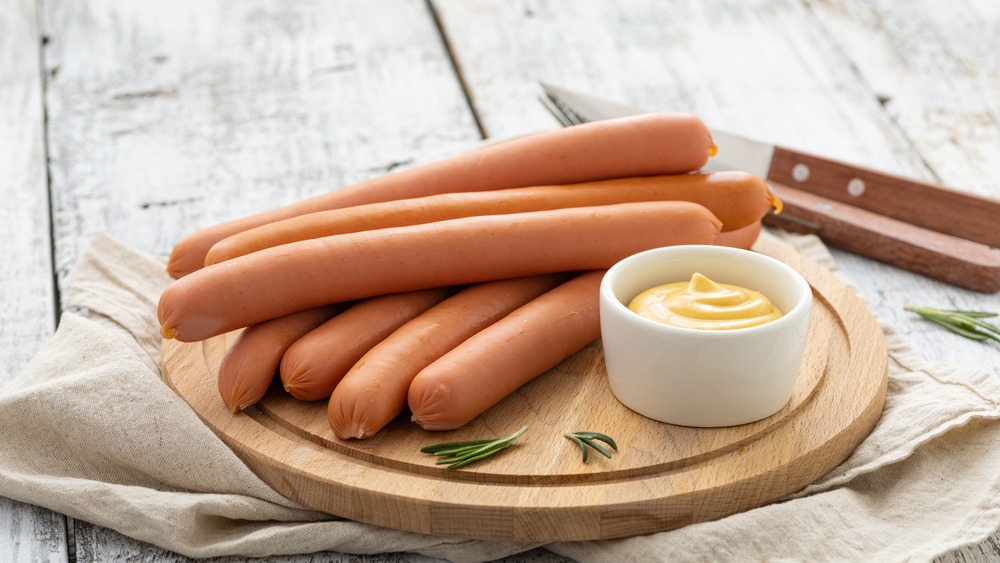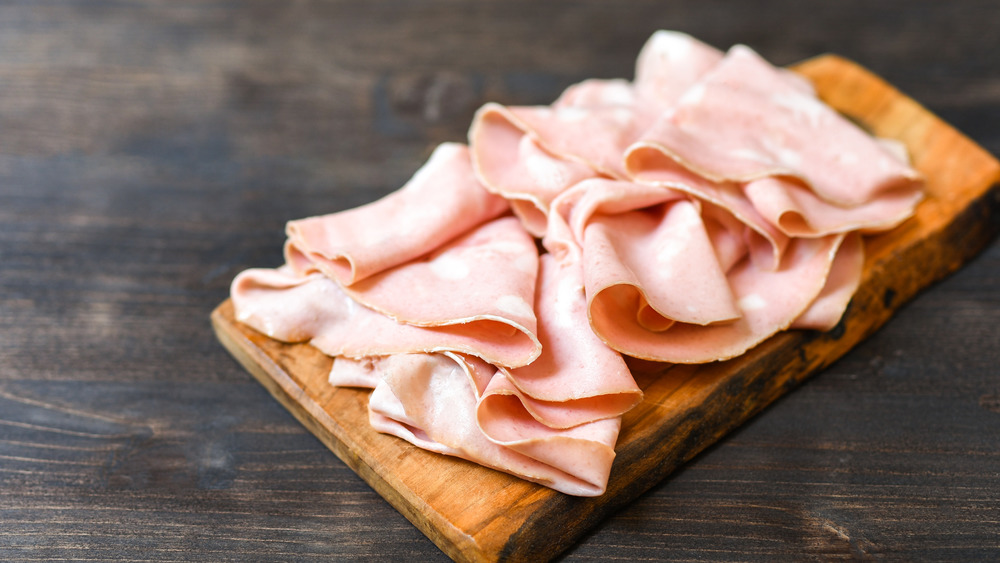What It Means If Food Contains Mechanically Separated Meat
It's okay, you can cringe – "mechanically separated meat" certainly doesn't sound appetizing at all, and it's probably not something you're happy to see on package labels. It also sounds a little mysterious, and it's not immediately clear what exactly the phrase means, and how it affects what you're eating. But once you know the meaning behind the words, mechanically separated meat doesn't have to be a scary packaging term.
According to the European Food Safety Authority's website, mechanically separated meat is what's left behind on animals after the main cuts of meat have been removed. Rather than letting it go to waste, the meat is removed through a mechanical process and incorporated into other foods. Usually, there are two different processes for mechanically separating meat: high-pressure, which usually produces paste-like meat that's used in products like hot dogs, and low-pressure, which ends up looking a little like minced meat.
The U.S. Department of Agriculture's website explains that high-pressure mechanically separated meat is usually produced by forcing bones that still have meat attached through a sieve (or something similar) to separate the remaining meat from the bone. Also, ground meat or poultry and mechanically separated meat or poultry aren't the same; as the USDA explains, ground meat and poultry come from whole muscle parts or cuts of meat that have already been removed from the bone.
How is mechanically separated meat used?
As with all other meat and poultry, the USDA regulates mechanically separated meat. According to MeatSafety.org, mechanically separated poultry is just as safe to eat and nutritious as regular cuts and can even have slightly higher calcium and phosphorus levels. However, you won't see mechanically separated beef in any products on shelves; per the USDA's website, in 2004, the Food Safety and Inspection Service banned mechanically separated beef in human food to protect consumers from mad cow disease. However, both mechanically separated pork and poultry are used in products on shelves.
According to the American Meat Science Association, mechanically separated poultry is used in products like sausages, nuggets, and meat patties. You might also find mechanically separated meat in hot dogs and lunch meat; for example, the nutrition info for Oscar Mayer's bologna lists mechanically separated chicken and pork. Usually, manufacturers have to list mechanically separated meat or poultry in the ingredients list on their products, so if you want to know if it's in anything you're eating, just check the label.

